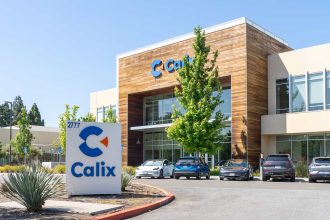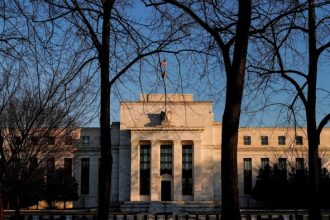Bruce Berkowitz of
Fairholme Fund
was Morningstar’s Manager of the Decade in 2010. Now, many investors haven’t heard of him.
But 2023 could change that. So far, the $1.2 billion fund (ticker: FAIRX) is up 23%, better than 99% of peers in Morningstar’s Large Value category. It has done that without any artificial intelligence stocks.
Before you click “Buy,” you must understand Fairholme’s bizarre portfolio design and management structure. Some 82% of the fund’s portfolio is invested in one stock—Florida real estate developer
St. Joe
(JOE). Berkowitz is chairman of St. Joe’s board of directors, and he says “a third of the [Fairholme] fund is money affiliated with my family”—an estimated $340 million. So, the Berkowitz clan is essentially paying the fund’s 1% management fee to itself.
Berkowitz, who lives in Florida, calls his family’s Fairholme assets “permanent capital.”
Fairholme is a textbook example of both the promise and perils of concentrated funds. Even when the long-term returns of such funds are strong, many investors don’t enjoy them because they can’t handle the volatility. Returns on just a handful of stocks tend to be feast or famine.
Almost two-thirds of Fairholme’s 2023 return so far came on July 27, when its share price leapt from $33.25 to $38.24—a gain of 15%. Instead of the top 1% ranking in Morningstar, in 2021 and 2022 it was ranked in the bottom 100th percentile with 6.9% and minus-20.5% respective returns. That’s after a top 1% ranking in 2020 with a 46.9% return. If you held for the past five years, you would have beaten 99% of the fund’s peers with a 14.8% return. Then again, in the past 10 years ended Oct. 23, it has lagged behind 97% of peers, with a 5% return.
The July 27 surge was due to a strong St. Joe’s earning report. “[St. Joe’s] progress is a lumpy process,” Berkowitz acknowledges. “You just can’t snap your fingers to build a couple of thousand homes. It averages out to a very nice double-digit growth rate, but it doesn’t happen in a smooth line.”
Most investors don’t have the patience to reap the benefits. One Morningstar stat worth examining is Investor Returns, which calculates returns based on investor trading activity versus the fund’s regular returns if you just bought and held. Calculated monthly, through Sept. 30, Fairholme had a 10-year annualized investor return of 1.7%, versus 6.4% for the fund. The fund has suffered some $7 billion in shareholder outflows in the last 10 years, after the bloom was off the “manager of the decade” rose.
Return gaps are common for volatile funds. Every year, Morningstar produces a “Mind the Gap” study examining how investor returns differ versus regular returns for different fund categories. According to the latest 2023 version, “we found that the least-volatile quintile [of funds across all categories] had a 0.94% a year gap, on average, while the most-volatile quintile had a 1.94% annual gap.” Fairholme has a 10-year standard deviation, a volatility measure, of 25%, versus 15% for the average Large Value fund.
Ironically, concentrated funds could provide diversification for the rest of your portfolio. “Most clients are already over diversified,” says Phillip Cook, co-manager of
SouthernSun Small Cap
(SSSFX), which holds 21 small companies. “If you own several mutual funds, you don’t need 50 or 100 more stocks from SouthernSun.”
True, but in Fairholme’s case, investors could just buy St. Joe stock directly and not have to pay its 1% management fee. In fact, Berkowitz says he has no problem paying institutional shareholders who want to sell their Fairholme fund stake with, you guessed it, shares of St. Joe instead of cash.
Email: [email protected]
Read the full article here





